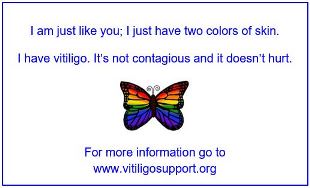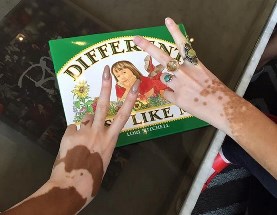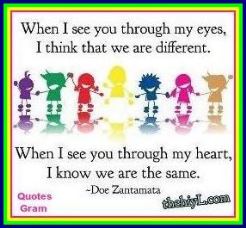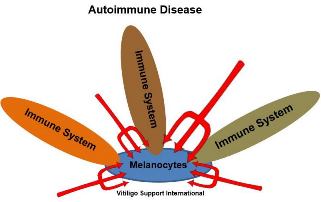| Click Here to View VSI Newsletter in Browser |
 |
|||||||||||||||||||||||||||||
This Newsletter Has Been Generously Sponsored By:
|
|||||||||||||||||||||||||||||
|
Dear VSI Members, Friends, and Donors, In recent weeks we’ve had an influx of requests for support from those experiencing the social stigma that vitiligo brings to so many in the South Asian countries. I am told that in some regions of India, if a single member of a family develops vitiligo, the entire family is often ostracized. Developing vitiligo after marriage can be grounds for divorce. In America, though the stigma is not as great, many with vitiligo still feel shunned, and experience emotional and social isolation. Whatever became of America, the “melting pot” where all cultures and ethnicities come together as one? In thinking about the many facets of diversity and acceptance, I began mulling over at what age/stage humans begin to notice differences, and when and why that begins to translate into prejudice/discrimination-based behavior, and how much of that is innate vs learned. According to Penn State Extension:
It’s normal to be afraid of something new or different, but just because something is new or different doesn’t necessarily mean that it is dangerous, bad, or needs to be avoided. The process involved with learning to distinguish between difference and danger is somewhat more complicated. Some elements are learned through personal experience, others by bias interference. My daughter teaches kindergarten in Metro Nashville, Tennessee, in a classroom primarily comprised of refugee children. The students in her school hail from nearly 20 countries. They celebrate diversity each and every day of the year. Each morning, my daughter’s classroom begins with a child saying “Good Morning” in his/her native language, then going around the circle, each child repeating the phrase. Throughout the year they learn about each other’s cultures, how each may say or do things differently, and how that makes them unique, and special in a very positive way. They learn to care about, support, and respect one another. Even when they are not in the classroom, such as at lunch, on the playground, or even on the bus, if they see one of their classmates being picked on by another child, they all come to the rescue. My daughter often provides assistance to her student’s families, providing transportation to and from the grocery store, and taking them to the library, or movies, etc. One day this summer, when she arrived at the apartment complex of one of her students, there was a big crowd, a large blow-up jumping house, and tables with presents, party favors, and cake. She saw quite a few of her students, but no one from the family of the child she was coming to visit, so she made her way to their apartment. When she arrived, she asked about the big party in the parking lot. The children very excitedly told her it was a birthday party for another of their classmates. She wasn’t going to ask why they had not been included, but the children quickly volunteered that the dark brown people don’t play with the light brown people…. which broke my daughter’s heart. At school, they all play together, and respect, and care about each other. Where is the disconnect? People just want to be listened to and understood. Take time to listen, with understanding and empathy. Like the strength of the mustard seed, change will come, one person at a time. We may not be able to change the world by ourselves, but we can each do our own part. “Be the change you wish to see in the world.”
Support VSI’s Work to Conquer Stigma
Sincerely,
Embracing Diversity: Each year as fall approaches, VSI begins receiving requests for information and support from parents of children with vitiligo. For first-time students or those just moving up a grade level, there are steps you can take to help ensure a positive start to a new school year. While this article is primarily centered on diversity education in the classroom, it also provides positive tips and ideas to help those who might be struggling with personal acceptance that can be used by all ages, anywhere, and any time. Whether you’re a student, parent, teacher, neighbor, or co-worker, everyday interactions are opportunities to help others understand that we all have differences. Diversity education is applicable from pre-school to the workplace and beyond to the broader community life. VSI would like to thank Lori Mitchell, a long-time VSI member for her outstanding work in diversity education. A great deal of the following material was based on an article entitled “Making a Difference at The Start, and All Through the School Year,”written by Lori Mitchell when her daughter April was entering kindergarten. Lori is an author and graphic artist, and has written and illustrated several children’s books, the most well-known being Different Just Like Me that she wrote for April, and to help children and adults alike learn to appreciate and respect diversity.
Lori and April have been members of VSI since its inception.
Making a Difference at School I find that more and more teachers have questions about how to integrate a child with special needs into the class socially. Some parents think the teacher will handle the introduction; however, with privacy laws and regulations such as the Family Educational Rights and Privacy Act Regulations (FERPA) and the Health Insurance Portability and Accountability Act (HIPAA), most school districts prohibit teachers from discussing any child’s special circumstances without first receiving permission from the parents. So days, even weeks, can go by and the child doesn't get the help he/she needs. Look for ways to start the conversation Experience has shown that the earlier the child is properly introduced to the class, the sooner he/she is understood and accepted. If it's left, even for a day, teasing and misunderstandings may prevail. In our family, kindergarten was slowly approaching and my husband and I agonized over what to do for our daughter April, who had vitiligo covering about 60% of her body. Get a Head Start Because April wouldn't know anyone at her new school, On orientation day there were kids and parents pointing and whispering, so we knew there would be questions at school. I didn't know that I could have spoken with April’s teacher to ask for help. I thought her teacher had enough going on and we should just handle this ourselves. We didn’t want to bring April up in front of her new classmates to point out her vitiligo, as she has always been very shy and never wanted much attention drawn to her. We thought about having her go out of the room while we talked about her skin, but that seemed wrong. We felt it would send the message that she was ashamed of her condition, or that it had to be a secret. So what were we to do?
This way it wasn't just about her condition, We sent it home for the parents to read to their children. The next day April wore her usual shorts and T-shirt. There were a few friendly questions, but from then on she was just another kid in class. Click here to see April’s letter Little Things Can Make a Big Difference
In first grade, April's teacher invited her to help set up the classroom about a week before school started so she could see where she would be sitting and she could get to know the teacher. That helped April feel more at ease on the first day of school. It seemed so simple, but it made a big difference.
Bring Baby Pictures Importance of Communication In fourth grade, I didn't think I needed to talk to April's teacher. A few weeks into the school year, April came home and told me two boys had been calling her and her friend bad names. I realized I needed to make sure that her teacher knew I wanted to be informed of anything like this. It’s important to keep communication open with your child. Ask them how their day went and watch for any signs or changes in their personality. April usually told me if anyone said anything about her vitiligo. I would try to just listen and let her figure out what she wanted to do about it. I think that helped her to feel like she had more control. I wasn’t going to be there every time someone said something to her so she would have to know, and feel confident, that she could deal with it on her own. If she asked for ideas, I would suggest something, but I would usually let her go through a list of her own ideas first. Practice at Home: Role play
Anyone can say anything; that doesn’t make it true! We had to practice so she would know that she wasn't any of those things that anyone called her. We talked about how much her family and friends loved her just the way she was. We also talked about bullies and some of the reasons they might be teasing her. It could be that they were scared of catching vitiligo. It could be that they were being teased at home or they didn't feel good about themselves. We emphasized that their behavior very rarely had anything to do with the person they were teasing. The point of role play is not to come up with the one There will be different situations and your child will have to think on his/her feet. The point is to have the discussion with your child before the bully does. The bully will zero in on any shame the child might be feeling. If you can role play and have an open, honest discussion, that shame is diminished, if not totally dissolved. Let Your Child be Your Guide Some children will be more outgoing than others. Talk with your child and provide a few ideas on what to say to the other children. Nothing formal is needed, just a few simple and honest responses, such as:
It shows that there's nothing to be ashamed of and there are no secrets. Most of the time the other kids in class just want to know more about the condition, and once they do, they feel more comfortable and know what to expect. Other Ways to Help Your Child Explain: April came up with the idea of handing out cards explaining her vitiligo. On each card she printed, "I'm just like you; I just have two colors of skin. I’m not contagious and it doesn’t hurt." April decorated them with stickers on the back and included VSI’s website address.
The cards were a big hit, and I think made her feel like she had a little more control over the situation. As April got older she became more comfortable answering questions about vitiligo, but she still kept the cards, just in case. If your child doesn't want to say anything about their condition, don't force them to. If a child is too young or just uncomfortable to speak for themselves, there are many fun classroom games and exercises that can be used for diversity education. Classroom Diversity Education As a parent, if you have the time, Discussions on diversity help all of the students. To prevent any one child from feeling singled out, you can talk to the class about differences in a general way, or have a day where each student gets a few minutes to tell something unique about themselves. Frequently, the students in April’s class shared personal stories about their family members that had some kind of difference and they asked questions to help them understand how to deal with different situations. For many students, this was their first opportunity to share this information. Every child in class has felt different at one time in their life and it's usually a great relief for them to know they weren’t the only one. Same and Different Classroom Exercises Helping children understand that they are each different in some ways and alike in others helps them become more accepting of differences as they go through life. Ask your child's teacher if in the first week or two of school they could have a day when every child shares things they like and like to do, and something unique about themselves and or their family. One child might explain that they just lost a tooth, another might bring a picture of a new baby sibling. They can share their favorite colors or season, or that they like to play outside or go to the zoo, or whatever they’d like, and things they like to do. When it is your child's turn, encourage him/her to share that he/she has vitiligo, telling the other children that it does not hurt, and is not contagious; it's just two colors of skin. Your child could also share things like his/her favorite color, favorite vacation, favorite holiday, etc. You can then step in and point out that each child is different in some ways and alike in others, explaining that this is what makes them special.
Bring in pictures of two similar objects that have differences, like fish.
Have the children list ways the fish are:
Ask students to line up, or if class size is large, Start by saying one thing about yourself that makes YOU different from the person on your right. Go down the row and have each child say something that makes them different from the person to their right. When you get to the end, start over and have them say one thing that makes them the same as the person on their right. Remind them before you start that you want to come up with as many different ideas as possible and try not to have any repeats. Make sure that when they are saying what’s different or the same that they say “I,” not “YOU,” as in “I” am different because I have blue eyes and yours are brown.” Never Judge a Book by Its Cover Take a plain brown bag, crumple it up and fill it with lollipops, then tie it with some old string. Now fill a beautiful gift bag with toilet paper and tie it with ribbons and bows. Ask the students to pick a bag. Once the bags are opened, ask them how they think this relates to people.
The children will soon begin to understand that each one of them are different in some ways and alike in others. Within a week or so, most will forget about differences, and get on with playing and learning. April’s Thoughts as a Child As I was writing this article, I asked April (at the time, around 12 years old) what she would want to share, and this is what she said: I have made a few discoveries while living with vitiligo. One is that I'm not the only one in the world that is different. Every kid in my class has something that makes them different. I think I used to wonder why I was the only one that had to be different, but now when I really take a look at everyone around me, I can see that no one is perfect. The second thing I figured out was that, so far, there's very little I can do about my vitiligo. The only choice I have is how I deal with it. I can be really angry and bothered by it, I'm going to have vitiligo whether I'm happy about it or not. Why not choose to be okay with it and focus on the good stuff in my life? If someone teases me, I'm not going to let him or her ruin my day. Some person I don't even know cannot decide what I think of myself. I have lots of friends and family members that love me just the way I am, and they count much more than some rude goof ball. Another discovery is that I am more than just my vitiligo. I'm talking about it a lot now because that's what this is about, but normally I don't really talk about it or think about it all day. I have lots of other things to think about, like my cat, drawing, singing, playing piano, my friends, swimming, homework, and shopping. April Today Growing up with the love, support, and guidance of her parents, coupled with a mother dedicated to imparting diversity education to all those in her path, April Mitchell is now a beautiful and well-adjusted young lady. Many of you have seen the model Chantelle/Winnie Harlow in the media (she competed on cycle 21 of America’s Next Top Model). She, too, has become an inspiration to many for never letting vitiligo stand in the way of her dreams. April, also quite interested in fashion, had been following Chantelle’s Instagram, and was surprised when one day the cover of her mom’s book, Different Just Like Me, appeared on her Instagram. Chantelle shared stories of being bullied as a child, and said that when she was only 7 years old, her grandmother had given her a copy of the book which really helped and inspired her as a child. April contacted Chantelle via Instagram and the next thing you know they had the opportunity to meet. Chantelle told April she almost felt like they were sisters.
They took a moment to pose with their hands over the book.
Different Just Like Me can be found in most The book shows how we are all different, yet still very much alike. It is recommended for kindergarten through third grade, but the lessons and activities have been used in classes all the way up to 10th grade. Lori Mitchell donates ten percent of the book proceeds to Vitiligo Support International. For additional information and classroom resources visit: Different Just Like Me VSI Director Jackie Gardner visiting
We hope that this article has helped you consider not only the ways that you might evoke positive change in the preconceived notions of others, but that you also keep your own mind open to personal changes you might need to make to improve in your role as a vitiligo ambassador for diversity awareness and acceptance.
Calling all Medicare Vitiligo Patients!
Part of the problem is that currently there is no accepted standard for coverage of vitiligo treatments. Each company has their own policies and guidelines, many times based on outdated and incorrect information. What most people may not realize is just how much private insurance coverage can be affected by Medicare policies. Over 55 million Americans are now covered by Medicare or Medicare Advantage, making it the nation’s largest health insurance program. Consequently, many, if not most, insurance providers establish their baseline standards and procedures to follow the Medicare model. Medicare has agreed to meet with us – but requires that we bring Medicare letters of denial for a vitiligo treatment. If you are reading this newsletter and you, or someone you know, was denied coverage for a vitiligo treatment by Medicare, please contact VSI immediately. You could help make a difference for future insurance coverage for ALL vitiligo patients! Click Here to Contact VSI
What's On Your Mind? Q. Will my brother’s children get vitiligo?
The above information is provided for informational purposes and not intended as medical advice. Each person’s health is unique to their own set of circumstances. All medical decisions should be discussed with your health care provider.
Highlights of recently-published medical Increased Perceived Stress in Vitiligo Patients Dr. Caroline LePoole and researchers from Loyola University in Chicago IL have been studying the effects of emotional and psychological stress on vitiligo for many years. They have conducted multiple surveys in which many VSI members have participated. They’ve also delved deeply into the scientific causes and pathways that could tie emotional stress to the onset or worsening of vitiligo. This same group of Loyola researchers has for many years been studying the inducible heat shock protein 70 (HSP70i), a protein released by cells (like melanocytes) when under stress and known to play a pivotal role in the pathogenesis (development) of vitiligo. You may recall a report in VSI’s Summer 2013 Newsletter after they developed a modified HSP70i protein. Discovering that HSP70i levels are elevated in mice during psychological stress, they introduced the modified version of the protein into vitiligo-prone mice. This resulted in the interruption of the autoimmune response, both preventing the development of vitiligo and significantly restoring existing pigment loss.
Noting that the initial development or progression of vitiligo often follows an episode of emotional or psychological stress, Dr. LePoole et al. conducted a survey to investigate the perceived stress levels in vitiligo patients, this time comparing the results to age and gender matched controls. They administered the Perceived Stress Scale -10 (PSS-10) to 104 vitiligo patients and 25 controls. First developed in 1983 by Sheldon Cohen and colleagues, the PSS-10 has since become one of the most widely used tests for measuring psychological stress. The PSS -10 is a 10 item questionnaire that predicts biological markers of stress as well as increased risk of disease. Higher scores demonstrate links to chronic stress and markers of shorter life expectancy, higher cortisol levels, depression, and other symptoms of immune suppression. Their Results: Vitiligo patients had much greater stress levels than their matched controls, also exceeding The Average PSS Scores Vitiligo Patients: 19.8 The scores did not correlate with disease duration or activity, meaning the responses were not higher (or lower) based on how long the patients had been affected by vitiligo, or whether their vitiligo was stable or active. Their research and understanding of the interrelationship between emotional stress, HSP70i, and vitiligo in mice leads them to believe that the same pathways and responses may also apply in humans. The process of introducing foreign genetic material, such as a mutant protein, into humans is a relatively new technique falling under the category of gene therapy. The U.S. Food and Drug Administration (FDA), regulates this type of research with comprehensive federal laws, regulations, and guidelines. Though not yet tested in humans, the findings of their modified HSP70i continues to suggest potential value in treating, or even preventing vitiligo in humans. VSI will continue to monitor this news and report any updates in future newsletters. Click here to take the PSS-10 and find your stress level.
Earn Funding for VSI with Amazon and eBay Online Shopping Can Benefit VSI!
Support VSI Through Ebay
|
||||||||||||||||||||||||||||
| Copyright © 2018 Vitiligo Support International Inc. All rights reserved. Reproduction or republication strictly prohibited without prior written permission A Vitiligo Support International, Inc. financial statement is available upon written request from the Virginia Office of Consumer Affairs. Mail requests to: Virginia Department of Agriculture and Consumer Services, Office of Consumer Affairs, P.O. Box 1163, Richmond, Virginia 23218. |
|||||||||||||||||||||||||||||




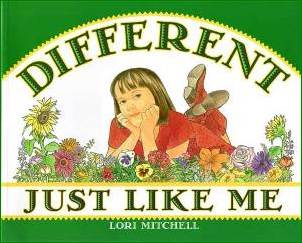



 On the first day of school, we dressed April in colorful tights and a long sleeve shirt to cover the most noticeable part of her vitiligo. We typed up a letter as if April had written it that told all about what vitiligo was and wasn't. There was a picture of April and her signature. It not only told about April’s skin, it also told about her pet cat, a few of April’s favorite things to do, as well as her favorite foods.
On the first day of school, we dressed April in colorful tights and a long sleeve shirt to cover the most noticeable part of her vitiligo. We typed up a letter as if April had written it that told all about what vitiligo was and wasn't. There was a picture of April and her signature. It not only told about April’s skin, it also told about her pet cat, a few of April’s favorite things to do, as well as her favorite foods.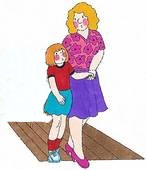
 My friend’s daughter had a rare, progressive, neurological condition causing her to gradually lose her ability to walk and talk. At the beginning of each school year, her mom would visit and explain the condition to her classroom. She even brought pictures from when she was younger and could still walk and talk. Once the other kids saw that she was just like them at one time, they could relate to her better.
My friend’s daughter had a rare, progressive, neurological condition causing her to gradually lose her ability to walk and talk. At the beginning of each school year, her mom would visit and explain the condition to her classroom. She even brought pictures from when she was younger and could still walk and talk. Once the other kids saw that she was just like them at one time, they could relate to her better.
